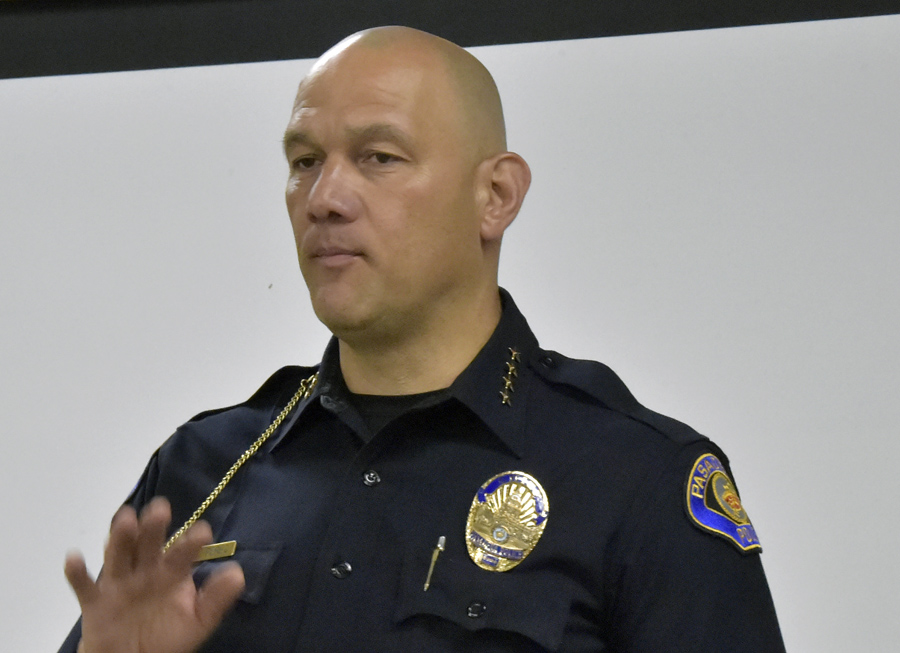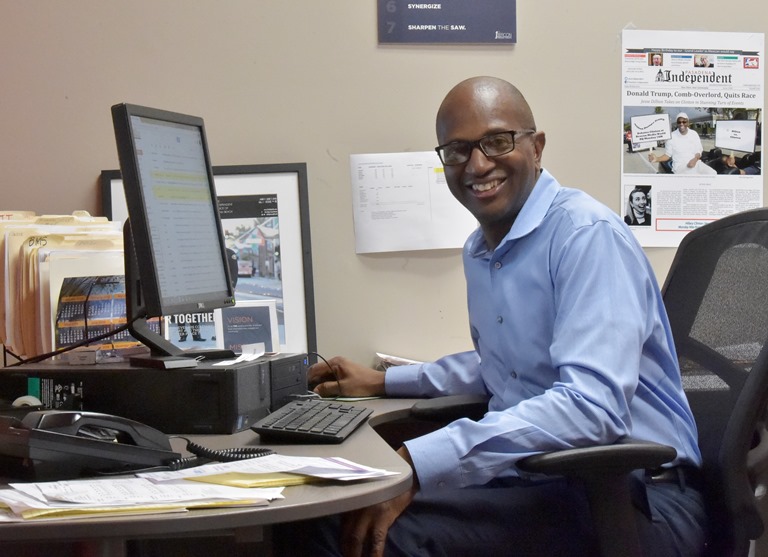
De-Escalation and communication skills are key factors for police officers
By Terry Miller
Pasadena Police Department has seen more than its fair share of negative press in recent years. Lawsuits, ATF raids on a former high-ranking officer’s home in Sierra Madre and internal and external reviews have tarnished the image of a proud police department of over 400 employees. Regrettably, this is a national trend.
As we mentioned last week, with the retirement of Phillip Sanchez as Chief of Pasadena PD, Interim Chief John Perez has offered a plan of restructuring the dept. and hopefully regaining the trust of the community as a whole.
It’s an enormous task but one Interim Chief Perez takes very seriously and with humility.
Mental illness played a role in a quarter of the incidents where deadly force was used in 2017, according to a Washington Post analysis, and 19 out of 20 victims of police violence were armed in some way.
The National Law Enforcement Officers Memorial Fund stated that, as of December 2017, 128 officers had died in the line of duty in 2017. Forty-four of them were shot and killed. This is a 10 percent decrease from 2016, which had 143 deaths, with 66 shot and killed.
So either way you look at it, law enforcement is a profession where one’s dedication, strength of character and overall well-being will play a role in keeping us all safe. It’s a very difficult job, and certainly not for everyone. But, again, proper training and de-escalation techniques will no doubt assist Pasadena PD in regaining the public trust.
Pasadena PD’s de-escalation training for their officers, teaching them to defuse potentially dangerous situations and get armed individuals to lay down their weapons is critical. Most states, however, don’t require such training, instead leaving the decision to local agencies like Pasadena.
The tactics Pasadena Police use are critical in understanding just how precarious law enforcement jobs can be and how quickly a seemingly routine incident can escalate into something else.
Interim Pasadena Police Chief John Perez addressed the small class of local journalists assembled in a training classroom two weeks ago to describe, in detail, how police use-of-force procedures and policy has changed over the years, and how police officers must make multiple crucial decisions precipitously for any given situation and deal with multiple scenarios.
As ‘rookies’ we were put through some of the paces that a police officer might go through during the course of their training. It’s not that easy and it involves lots of cognitive skills one might not even think about.
One thing I found vital to policing is de-escalation of any given scenario. To understand this, in depth, one has to remove any preconceptions and other human traits we all have, after which the officer can then, address the situation calmly and hopefully resolve the issue without any use of force.
With the seemingly incessant wave of negative publicity police departments face across the United States and incidents being recorded on cell-phones, body-cams and then, in many cases, posted to You Tube or social media, officers, too, are under siege and accused of undue use of force, often without justification.
Non-compliance with officers’ repeated requests invariably lead to escalations in tensions and possibly end up in some sort of altercation. But again, here is where a police officer’s experience and training come into play. Knowing just how to deal with any given incident is really complex and vital for all parties concerned.
In addition to de-escalation techniques, Pasadena Police have access to a vast array of resources to offer people as an alternative to arrest/confinement. According to Lieutenant Jason Clawson, Adjutant to the Chief of Police, the city offers some unique resources and options for offenders or potential offenders such as The Flintridge Center, which can help transform lives with some of the many programs offered. Not all cities can boast such wonderful resources.
One is YOP ( Youth of Promise) is a development program serving youth in the Northwest Pasadena and West Altadena communities who have been impacted by poverty, community violence, gangs, and/or incarceration. Their goal is to see all young people finish high school and enter college. They provide them with support, resources and positive alternatives to joining gangs and becoming entangled in the justice system. Many youth live in high-need, high-risk circumstances, but have tremendous potential when they receive support from adults who believe in them.






